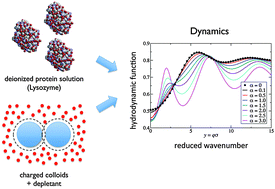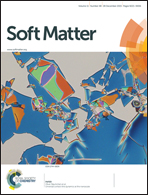Short-time dynamics in dispersions with competing short-range attraction and long-range repulsion
Abstract
Dynamic clustering of globular Brownian particles in dispersions exhibiting competing short-range attraction and long-range repulsion (SALR) such as low-salinity protein solutions has gained a lot of interest over the past few years. While the structure of the various cluster phases has been intensely explored, little is known about the dynamics of SALR systems. We present the first systematic theoretical study of short-time diffusion and rheological transport properties of two-Yukawa potential SALR systems in the single-particle dominated dispersed-fluid phase, using semi-analytic methods where the salient hydrodynamic interactions are accounted for. We show that the dynamics has unusual features compared to reference systems with pure repulsion or attraction. Results are discussed for the hydrodynamic function characterizing short-time diffusion that reveals an intermediate-range-order (cluster) peak, self-diffusion and sedimentation coefficients, and high-frequency viscosity. As important applications, we discuss the applicability of two generalized Stokes–Einstein relations, and assess the wavenumber range required for the determination of self-diffusion in a dynamic scattering experiment.



 Please wait while we load your content...
Please wait while we load your content...